Common purslane is a highly nutritious edible and medicinal plant that readily grows in most areas. While known as a weed that may annoy some gardeners, the purslane plant is one you’ll grow to love. Even purslane flowers are edible, along with their leaves and seeds. Make friends with common purslane, and before you know it you’ll be making all of the purslane recipes putting this plant to good use!
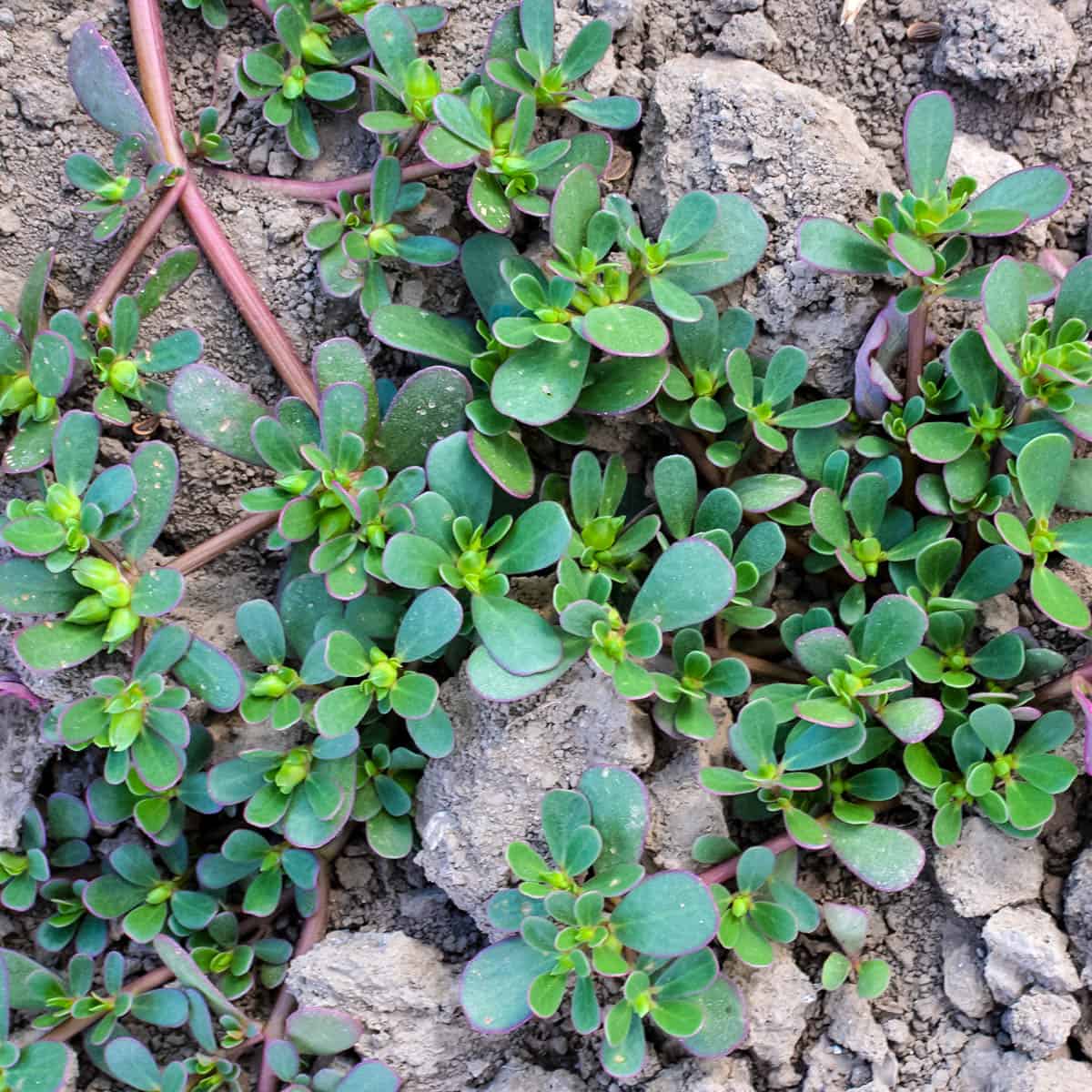
Want to save this post for later?
Wildcrafting Weeds
If you want to learn more about the edible and medicinal weeds that surround us and how to use them, check out my eBook: Wildcrafting Weeds: 20 Easy to Forage Edible and Medicinal Plants (that might be growing in your backyard)!
About Common Purslane
Purslane (Portulaca oleracea), also known as common purslane, is an extremely common plant that grows nearly everywhere. It’s likely you’ve seen it growing in sidewalk cracks or volunteering its red stems and succulent-like leaves in the garden.
Known as a weed by most gardeners, common purslane is a plant that everyone should grow to love and love to grow! Purslane is a highly nutritious edible and medicinal plant. It’s a happy sight whenever I see some in my yard!
The entire purslane plant is usable, including purslane flowers, stems, leaves, and even seeds. Depending on the region, purslane can be found growing wild and ready in the spring, summer, and fall.
Related: 13 Early Spring Edible Wild Greens
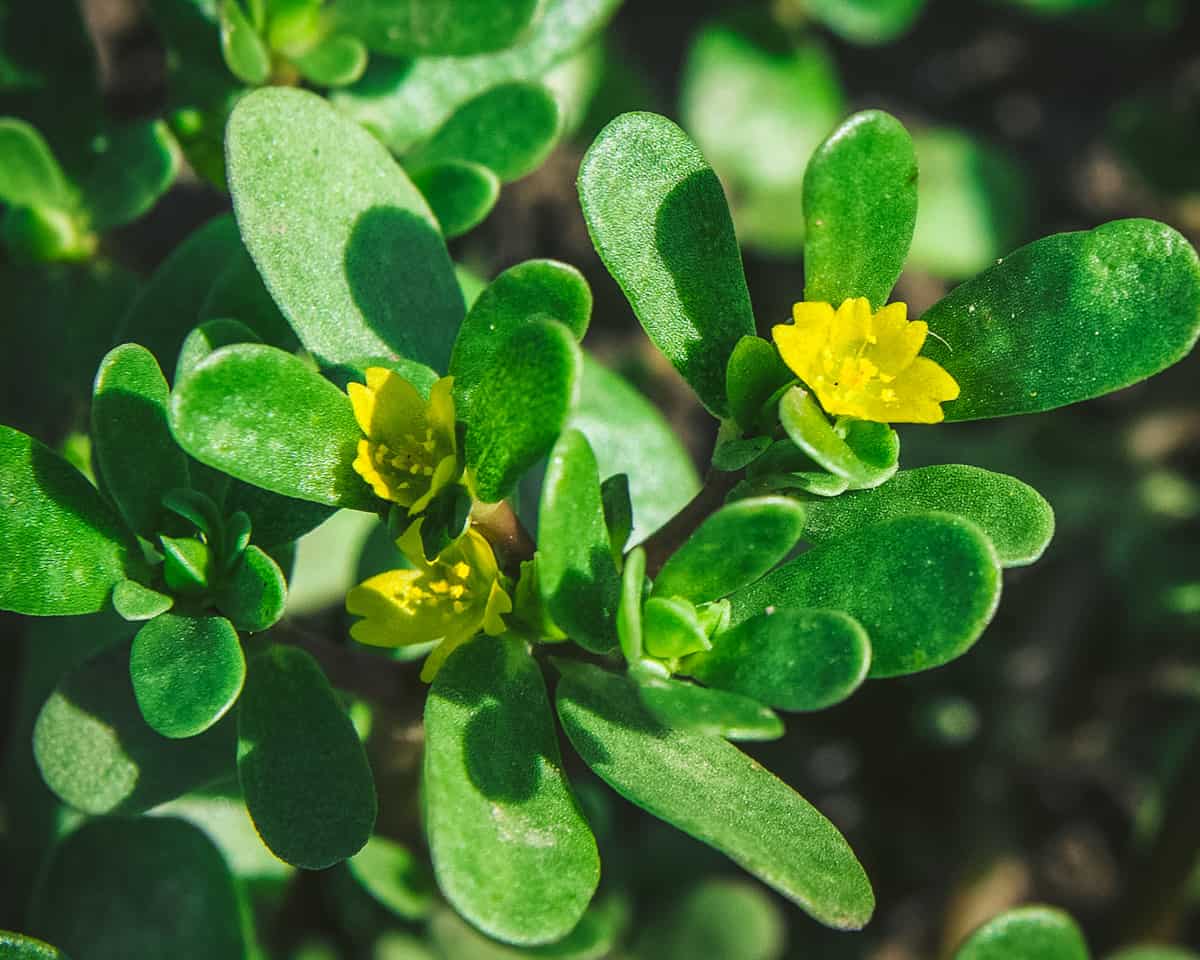
Where to Find Common Purslane
Common purslane grows almost everywhere in the world. It’s likely been underfoot, seen in driveway cracks, or parking lots throughout your life.
While seemingly able to grow in the harshest circumstances like dry, gravelly, sandy, poor soiled areas, purslane is a champion of survival and revival, coming back each year without prompt.
Purslane plants prefer full sun and tend to grow in gardens, lawns, fields, disturbed areas, and sidewalk cracks. Don’t underestimate purslane weed, it has as many benefits as it is easy to grow!
Related: 12 Edible and Medicinal Weeds to Forage in Your Backyard
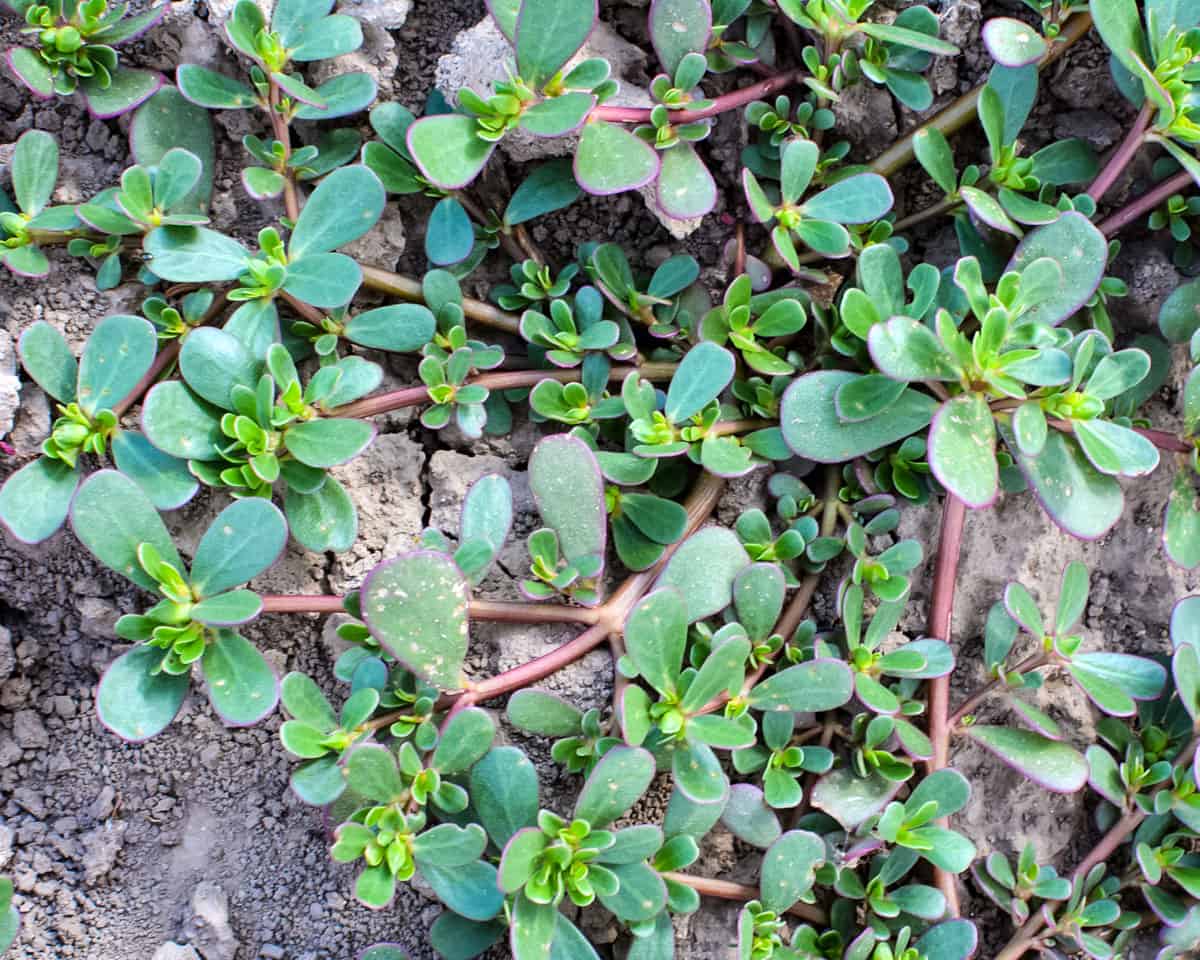
How to Identify Purslane
Common purslane grows low to the ground, with trailing strings of distinctive thick and reddish-colored stems. It’s a ground cover that readily reseeds itself each year.
Purslane has small yellow flower blooms that are only open in the morning. The plant is safe to eat regardless of where it is in the flowering stage, blooming from mid-summer through early fall.
One major identifying factor of purslane weed is its leaves. They are succulent, fleshy, and paddle-shaped with smooth surfaces and edges.
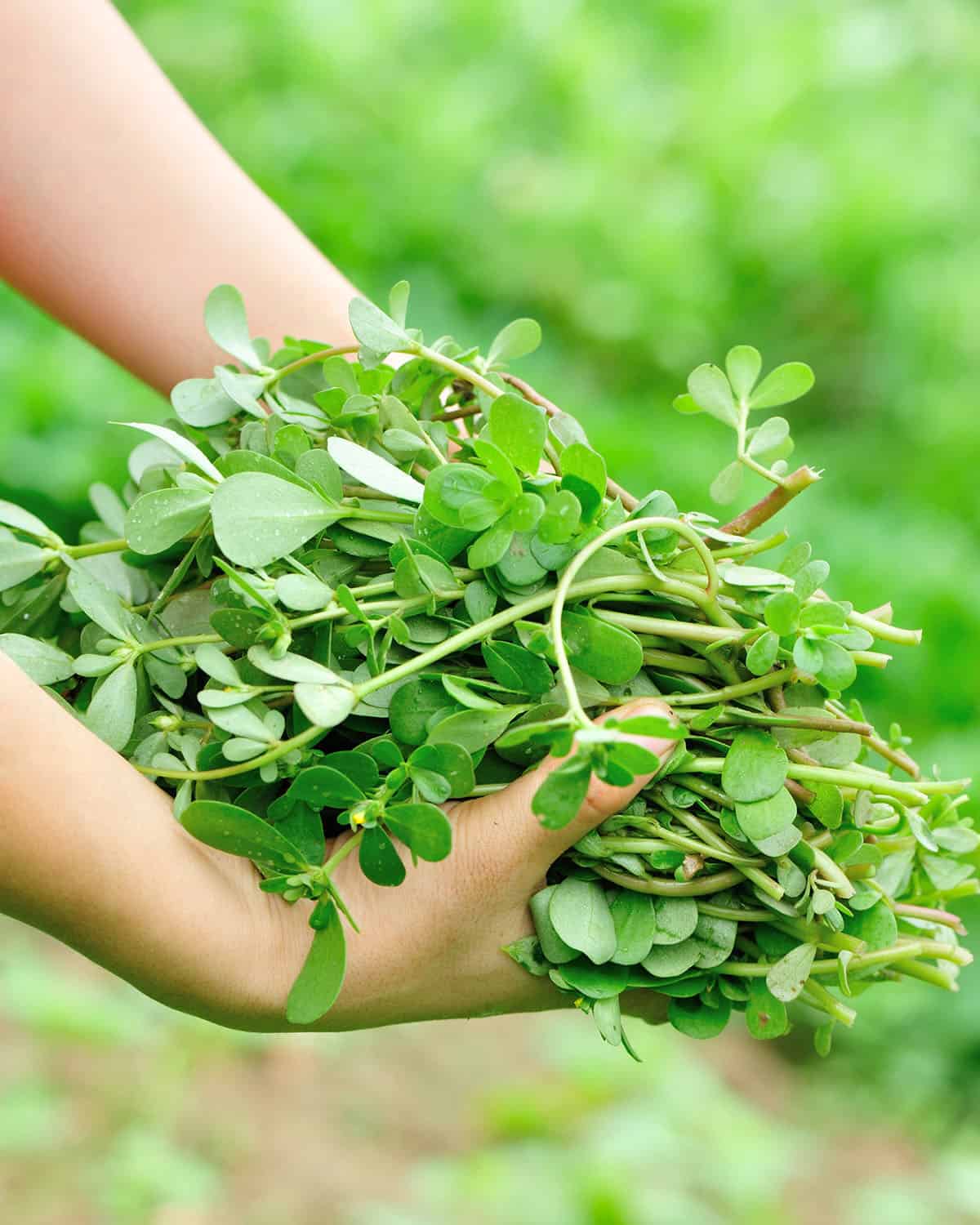
Harvesting Common Purslane
Harvest young purslane leaves throughout the growing season, with or without flowers.
Large handfuls of purslane weed can be cut with scissors using the “haircut method,” leaving the roots intact.
Be sure to harvest from an area that hasn’t been sprayed with chemicals. This is especially important with a plant like common purslane since it grows so prevalently and is seen as a nuisance. A great way to be sure is to harvest and eat purslane right from your backyard!
Purslane Look-Alikes
Common purslane can look similar to poisonous plants in the spurge family (Euphorbia spp), particularly hairy stemmed spurge (Euphorbia vermiculata) and spotted spurge (Euphorbia maculata).
These plants are toxic and are not for consumption, so it is important to be careful in their identification.
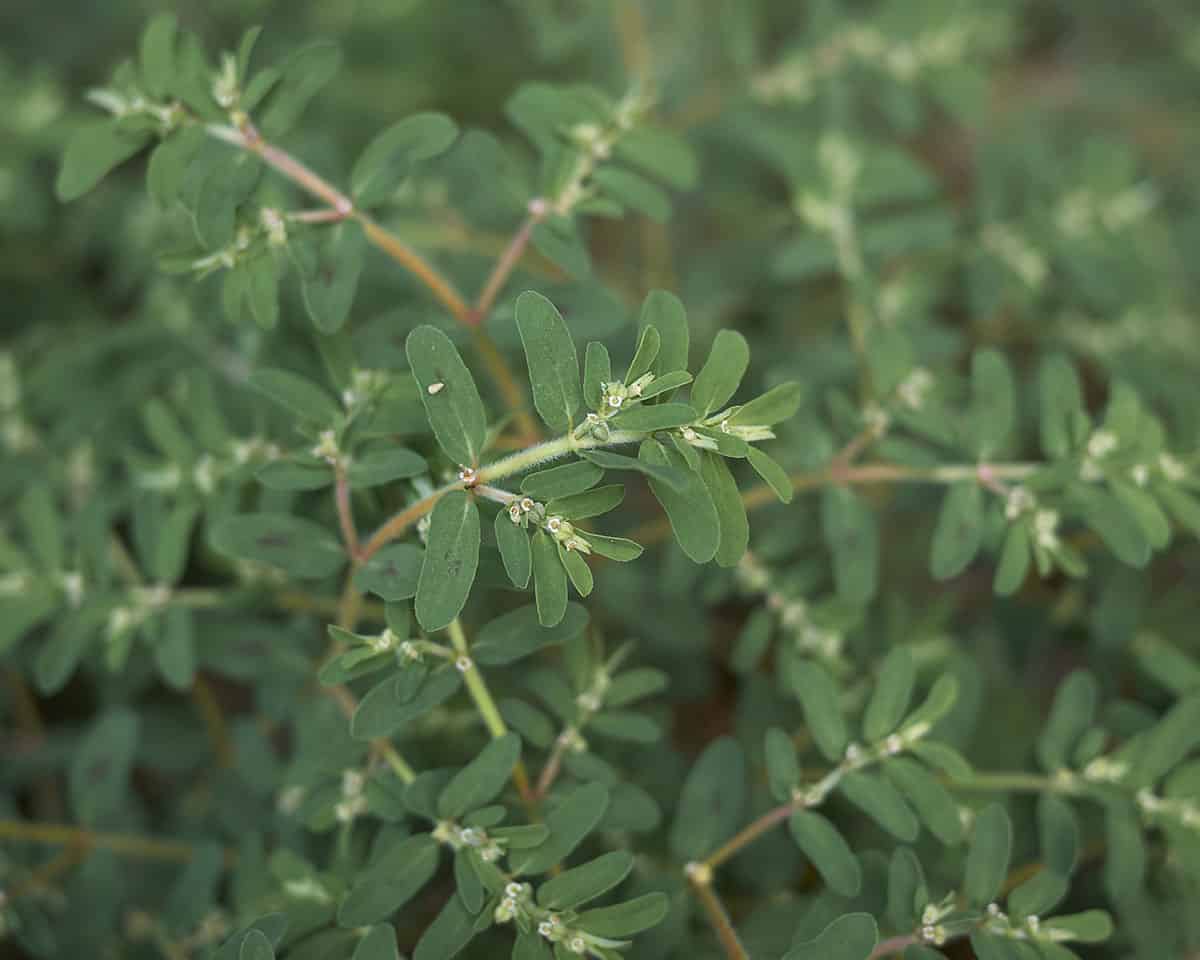
The best way to tell the difference between spurge and purslane plants is that spurge all have a toxic milky sap that exudes when you break the stem. If you are unsure if it is purslane, break a stem and look for milky white sap.
While spurge has a similar growth habit as purslane, the leaves are usually smaller with thin, woody stems. Spurge has more regular-type leaves that are thin and flexible, whereas common purslane has succulent-type leaves.
Hairy stemmed spurge plants are the most confused with purslane, as they can look quite a bit alike. Aside from the milky sap, they have another major difference. Hairy stemmed spurge has a hairy stem, which is not the case for purslane.
Edible Uses of Common Purslane
Purslane is a nutritious and delicious edible green that is high in vitamins, minerals, and omega-3 fatty acids. In fact, it is one of the best vegetable sources of omega-3 fatty acids!
All parts of the purslane plant are edible including the leaves, stems, flowers, and seeds. All varieties of purslane are edible and nutritious.
Purslane leaves and stems are edible both raw and cooked. They are an excellent addition to salads or smoothies. The leaves provide a mucilaginous quality that makes them good to thicken soups and stews.
Purslane flowers are also edible. Use as an edible garnish, tossed in a purslane salad, or thrown right into the blender with a smoothie.
Some of my favorite purslane recipes to make are pickled purslane, purslane relish, or simple steamed purslane. As common purslane has grown so much in popularity and can even be found at farmer’s market stands these days, I am sure there are more purslane recipes out there to try!
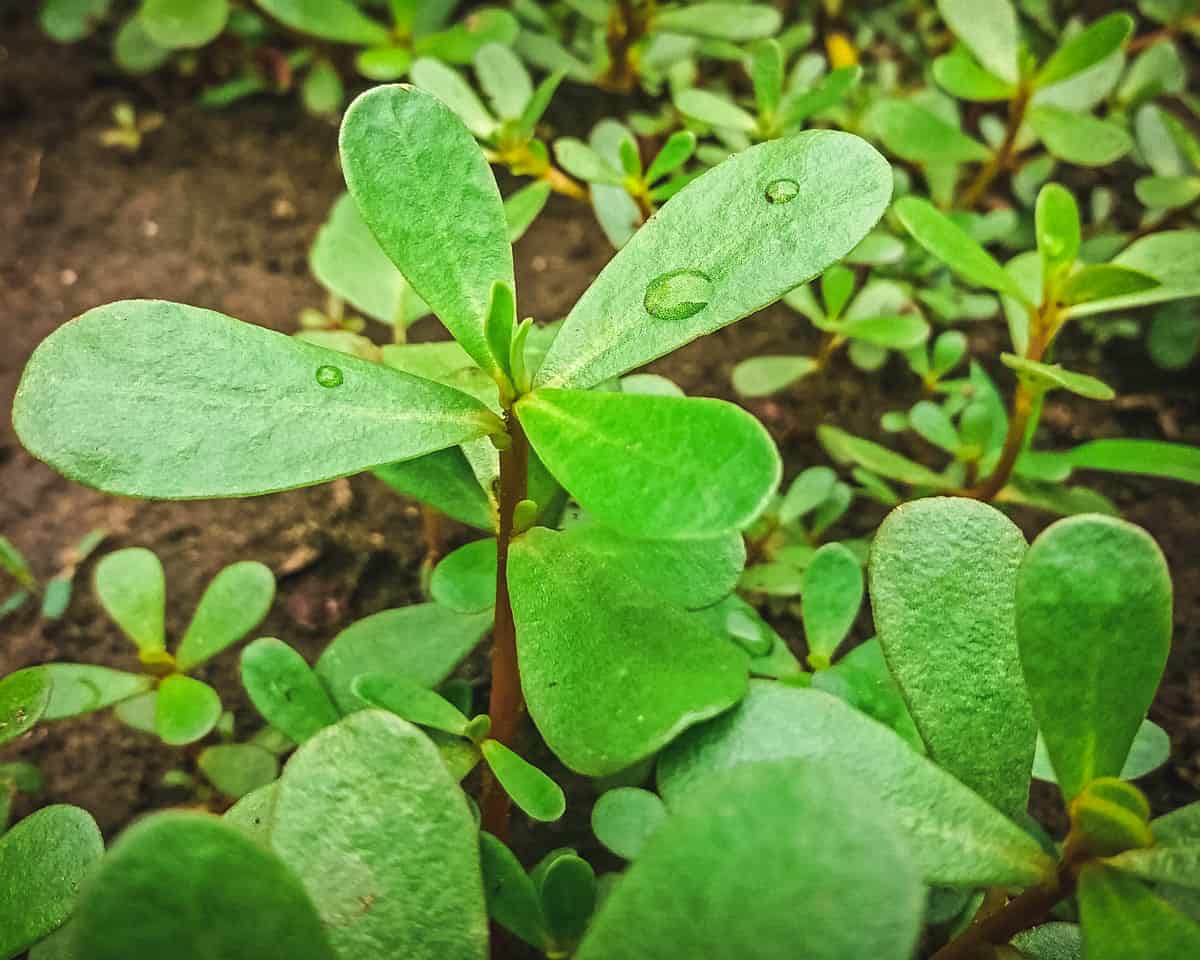
Medicinal Uses and Benefits of Purslane
Purslane is a succulent plant and has medicinal qualities similar to aloe or chickweed.
Use common purslane externally as a poultice for cuts and burns. Simply break open a purslane leaf and rub it on the affected area just like you would with aloe.
Purslane has wonderful antibacterial properties and is helpful for strengthening the immune system. Use it internally as a tea to help with digestive issues, and for relieving colds and bronchitis. This is a very simple method to reap purslane benefits!
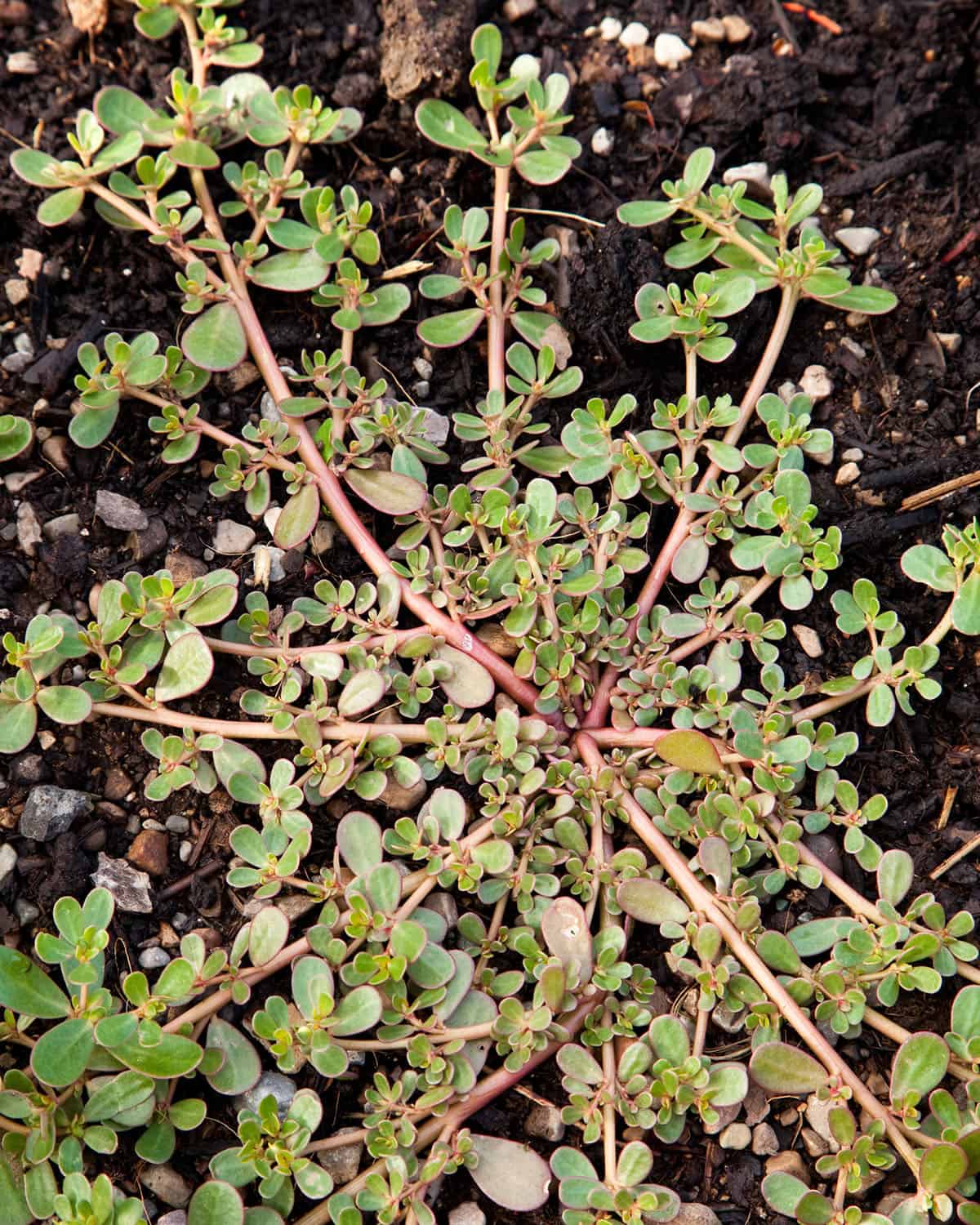
Grow to Love Purslane Weed
Common purslane is a strong independent plant that needs very little care in the way of survival. I find these types of “weeds” to be the most inspiring plants as I’ve learned and grown through foraging.
With so many nutritious qualities, medicinal benefits, and how incredibly easy it is to find, the purslane plant is a true gem of a weed!
Keep your eyes peeled as you walk along your driveway or through your garden. Really anywhere at your feet, you’re sure to find some purslane innocently growing. It survives and thrives without a care in the world!

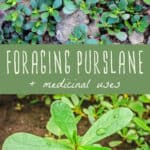
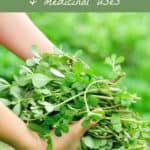

So very thorough!
First time I’ve heard about fakes.
Did you have an image of the second fake plant?
Very enjoyable.
Thank you.
Also, how long should you wait to plant your own food after it has been sprayed?
Thank you very much!
I don’t, sorry! If yard’s sprayed, I would wait at least two years or longer.
Can it be processed into powder?
What’s the best way to preserve
I’ve only ever used it fresh, but you could probably blanch and freeze it.
If it was sprayed as a weed last year will this years new plant be safe to eat?
No, personally, I wouldn’t risk eating them for many years.
Come get mine I have to pay someone to pull it, it is invasive here in S,CAL.
I must say it is east to weed , I just got too much.
I pickled my first batch this year with apple cider vinegar, garlic, and peppercorn! It’s delicious
I’m pretty sure I have Purlane in my veg garden. Masses of it! It took me a week to clear and throw it. I went away for a month and it was back in all its glory. I live in northern Spain which is warm but wet. Until I read this article I wasn’t aware that it was edible. Still nervous about trying to eat it!
I should note that it blocks light so that the other vegetable plants are smothered and don’t get full Sun. That’s why I remove it to the rubbish dump.
Try it in a simple salad, with cucumber, Romaine and other herbs. A small amount of Thyme, Oregano and chopped basil with balsamic vinaigrette.
I used the tender leaves, not the thick stems and even my picky husband loved it.
Fantastic, I just recently discovered Purslane to cook with thru an Israeli chef, and low and behold, I have plenty in my backyard. Love it with a Tahini dressing.
Yum!